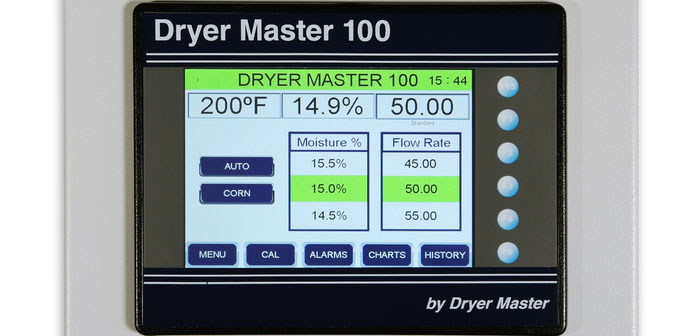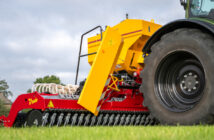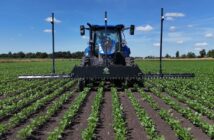Kentra, the Yorkshire-based manufacturer of mixed flow grain dryers, is introducing two new moisture measurement and recording systems for growers, and an automated moisture monitoring installation for mills and commercial grain stores.
The high-accuracy products come from Canadian manufacturer Dryer Master, whose DM510 control system fully automates the grain drying process with minimal manual intervention.
“The new DM100 is a lower cost, less sophisticated version that still provides an element of control to relieve the workload of whoever is managing the dryer,” notes Barry Higginbottom of Kentra.
Grain moisture is measured at the discharge point and adjustments to the discharge rate are made automatically when operator-set high, low and target moisture levels for each of three discharge speeds are hit.
Unlike the fully automatic DM510, the DM100 requires the speed set points and moisture targets to be adjusted periodically to maintain optimum performance.
The new Moisture Monitor Pro records grain moisture and temperature at the discharge – with the option to add an intake sensor as well – to help operators achieve consistent results from fully manual control.
As with the DM510 fully-automatic and DM100 semi-automatic systems, values are shown on a colour display, are accessible remotely using a mobile phone and can be downloaded to farm computer records.
These features are also common to Dryer Master’s new Load Monitor, a system that can be used with batch dryers or to record the average moisture of entire lorry or trailer loads of grain at the intake of a feed or flour mill or a commercial grain store.
“The sensor is fitted in the grain flow line – for example in a duct where grain passes from the intake pit to an elevator – and Load Monitor automatically starts logging as soon as the sensor detects grain flowing across it,” explains Barry Higginbottom of Kentra.
“The finished record includes a consignment identifier and time stamp, and compared with sampling, using Load Monitor means there is no delay to tipping incoming consignments and the moisture reading will be fully representative of the bulk.”




